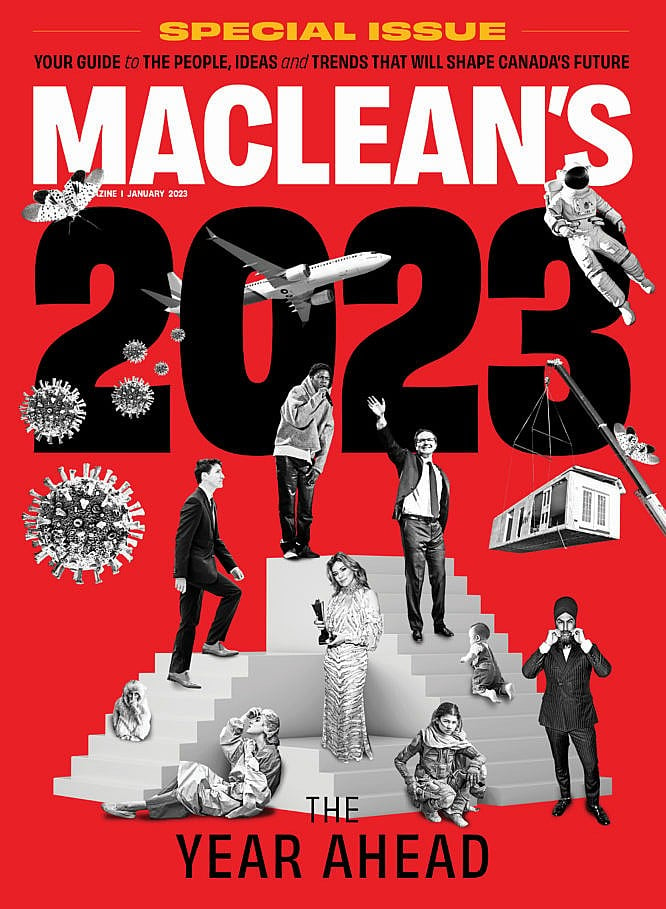My Prediction: We’re due for another global health emergency
COVID wasn’t the last large-scale outbreak. The next one is right around the corner.

(Photograph by Jacklyn Atlas)
Share
Kamran Khan is the founder and CEO of BlueDot.
In the last two decades, the world has experienced an alarming number of destructive outbreaks: SARS, MERS, Ebola, Zika and, of course, COVID-19. And although COVID is here to stay, it won’t always cause the level of disruption we’ve experienced to this point. Still, if the recent past is a predictor of the future, we’re due for another major outbreak in 2023 or 2024, one that could cause substantial disruption—to travel, social interaction, the economy and our very way of life. If we look at the last 13 years alone, we’ve had seven global public health emergencies, as defined by the World Health Organization. This cadence, of one event every two years, has been fairly consistent, but it appears to be accelerating.
More than half of the world’s population now lives in cities, which are perfect places for viruses to spread. At the same time, we have never been more mobile. Billions of people travel around the planet every year. Humans have inadvertently become vectors for dangerous microbes, and it’s happening at unprecedented speed. These new diseases are primarily zoonotic, meaning that they originate in animals. They transfer to humans because we mass-consume other creatures and disrupt ecosystems. You may remember that a market in Wuhan, China, was ground zero for the COVID pandemic. Another example is the Nipah virus, a bat-borne disease that was first documented in domesticated pigs. Numerous Nipah outbreaks have occurred in humans around Asia in the last few years.
I’m an infectious disease physician. I also run a company called BlueDot that tracks and forecasts outbreaks using analytics. According to our data, Canadians are the third-most internationally mobile population on Earth in terms of air travel per capita. Canada defines itself as a diverse microcosm of the world. That’s a huge strength, but it also means that we’re hyperconnected to global health risks. We share a long and porous land border with the United States, the world’s largest source of international air travel. If a virus is going to appear anywhere, it’ll likely be here.
Climate change also leaves us more vulnerable to outbreaks. Disease-causing insects, like ticks and mosquitoes, are living in new areas. Climate maps of the world are changing, and so are infectious disease maps. Dangerous microbes also thrive in populations with a lack of housing and sanitation. The disparity between the world’s haves and have-nots is widening—not only between countries, but within them. This played out during COVID, as variants emerged in populations with limited access to vaccines.
If many factors are driving this problem, that means there are many ways to tackle it. In the world of health care, we often talk about primary, secondary and tertiary prevention. Primary prevention is about preventing the emergence of new diseases. On the individual level, one solution is to reduce our collective consumption of animals. At a higher level, it’s about respecting wildlife and mitigating our impact on ecosystems. If we don’t, we’ll see even more spillover of viruses to humans.
Secondary prevention is about early detection. That’s what BlueDot does: we identify signs of outbreaks even before they’re widely reported, with the help of innovations like machine learning and data analytics. Businesses can be an incredible force for good in this arena by protecting the safety of their workers. I’d also like to see more health care providers tap into the analytics that companies like ours produce. There’s no clinician on Earth who can continuously monitor what’s happening around the globe. That’s where data comes in.
Tertiary prevention is about attenuating an outbreak’s impact, which can be accomplished by clearly communicating complex biomedical information to the public. More than ever, Canadians need to understand what kinds of actions are appropriate, depending on how viruses are (or aren’t) at play in their particular locations. Ultimately, if we want to create a more resilient world, we need to get faster, smarter and better coordinated. If there’s anything that can move faster than an outbreak, it’s our ability to spread knowledge through the internet.
We have to be able to detect the early signs of danger, understand the risks and mobilize responses that are commensurate with the situation at hand. To mitigate the effects of the next outbreak, we, as individuals, businesses and governments, need to invest in and focus on prevention. If we don’t, we may find ourselves back in the middle of an outbreak, and much sooner than we ever imagined.
—As Told To Liza Agrba
This story is part of our annual “Year Ahead” package. Read the rest of our predictions for 2023 here.
This article appears in print in the December 2022 issue of Maclean’s magazine. Buy the issue for $9.99 or better yet, subscribe to the monthly print magazine for just $39.99.
